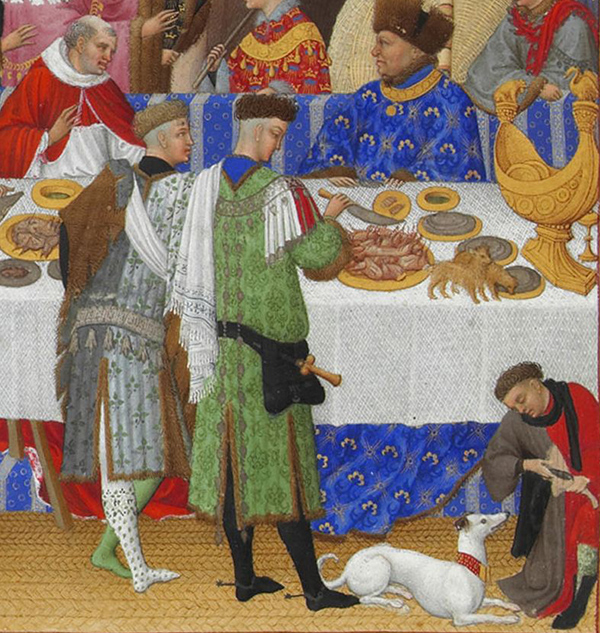I was ruminating to myself about the notion that medieval floors were strewn with rushes and realised that I had never seen such a thing shown in medieval art. That is not to deny that it may have been the practice in some households but it is to suggest it was in use only amongst the poorest. It seemed somewhat impractical in any case and I knew of the depiction of rush matting in late medieval interiors and of its use today in houses such as the late Elizabethan Hardwick Hall in Derbyshire.
Recourse to the internet confirmed my suspicions. I came upon a very useful article in Rushes on the Floor. This includes an illustration from early in her reign of Queen Elizabeth I receiving ambassadors in a room with a fitted rush mat floor covering and which can be accessed here and just as can be seen at Hardwick.
There is another useful article at The Tudor Royal Interior which looks in particular at the use of rush matting in the sixteenth century and refers to the manufacture of such matting in Southwark in the 1530s.
The Tres Riches Heures of Jean, Duke of Berry, dated to 1412-16, also shows fitted rush mat carpeting as well as a woven rush fire screen very like that in the painting of The Virgin and Child before a Fire Screen attributief to a follower of Robert Campin ( 1375/9-1444 ) now in the National Gallery. The scene of the Duke entertaining his guests can be seen here:
Image: Wikipedia
The woven rush matting can be seen more clearly here:

Image: blogs.getty.edu
The function of dogs as consumers of scraps on such occasions is discussed in Dogs at the Medieval Banquet.
That does not discuss the scrap consumption of the Duke’s tame bear cub whose paws can be seen on the table as it is sitting in the Ducal lap. It crops up again on his tomb and there is a gilt bear on the boat shaped vessel in front of the Duke.


No comments:
Post a Comment